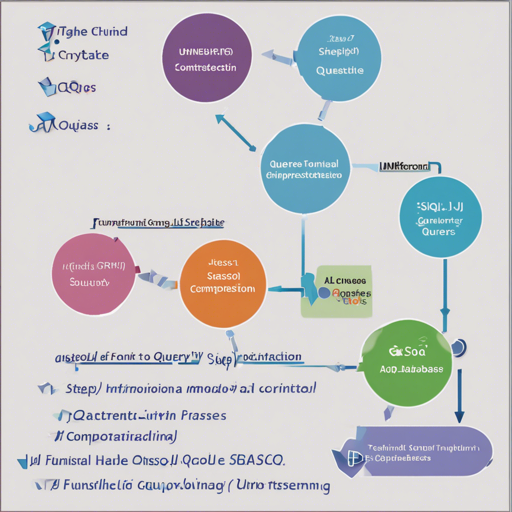Are you a Julia programmer looking to simplify the process of building SQL queries? If so, you’re in for a treat with FunSQL.jl! This powerful library allows you to construct SQL queries in a modular, compositional manner, enabling you to build queries incrementally from small, independent fragments.
What is FunSQL.jl?
FunSQL is a Julia library that provides an elegant way to create SQL queries while embracing a compositional syntax. This is particularly useful for developers who frequently build applications that need to construct SQL queries programmatically.
Getting Started with FunSQL.jl
To get started, you first need to install the FunSQL library, which can be done easily through Julia’s package manager. Once installed, you can begin to compose your SQL queries like a pro!
Example Use Case
Let’s break down a practical example: you want to find out when the last time each person, born between 1930 and 1940, living in Illinois, was seen by a healthcare provider. Here’s how you can achieve that using FunSQL.jl:
julia
@funsql begin
from(person)
filter(1930 = year_of_birth = 1940)
join(
from(location).filter(state == IL).as(location),
on = location_id == location.location_id
)
left_join(
from(visit_occurrence).group(person_id).as(visit_group),
on = person_id == visit_group.person_id
)
select(
person_id,
latest_visit_date = visit_group.max(visit_start_date)
)
end
Breaking Down the Code: The Puzzle Analogy
Think of building a SQL query as assembling a complex puzzle. Each piece of the puzzle represents a fragment of your query that can be combined with others. Here’s how the analogy fits:
- from(person): The initial piece you begin with, representing the ‘people’ section of your query.
- filter(1930 = year_of_birth = 1940): This puzzle piece narrows down your focus, like selecting specific colors or patterns in a puzzle to refine your image.
- join(…): Just like connecting two adjoining puzzle pieces, this command combines two data sets to create a more complete picture.
- left_join(…): Similar to placing an additional piece that might not connect directly but still adds valuable context.
- select(…): The final touches, selecting only the pieces of the puzzle you want to showcase as your finished image.
Generated SQL Query
Upon executing the code, the generated SQL query will look like this:
sql
SELECT person_2.person_id,
visit_group_1.max AS latest_visit_date
FROM (
SELECT person_1.person_id,
person_1.location_id
FROM person AS person_1
WHERE (1930 = person_1.year_of_birth) AND
(person_1.year_of_birth = 1940)) AS person_2
JOIN (
SELECT location_1.location_id
FROM location AS location_1
WHERE (location_1.state = IL)) AS location_2
ON (person_2.location_id = location_2.location_id)
LEFT JOIN (
SELECT max(visit_occurrence_1.visit_start_date) AS max,
visit_occurrence_1.person_id
FROM visit_occurrence AS visit_occurrence_1
GROUP BY visit_occurrence_1.person_id) AS visit_group_1
ON (person_2.person_id = visit_group_1.person_id)
Troubleshooting Tips
If you encounter issues while using FunSQL.jl, here are some troubleshooting steps you can follow:
- Ensure that all the necessary packages are properly installed and updated.
- Double-check your filters and joins to confirm they make logical sense and match the intended data structure.
- If SQL syntax errors occur, review the generated SQL query for potential discrepancies.
- Refer to the official Usage Guide for detailed documentation.
- For more insights, updates, or to collaborate on AI development projects, stay connected with fxis.ai.
Conclusion
Using FunSQL.jl can simplify the process of building dynamic SQL queries in Julia, allowing for a cleaner and more manageable approach when dealing with complex datasets. At fxis.ai, we believe that such advancements are crucial for the future of AI, as they enable more comprehensive and effective solutions. Our team is continually exploring new methodologies to push the envelope in artificial intelligence, ensuring that our clients benefit from the latest technological innovations.
Happy coding, and enjoy the modular magic of FunSQL!

